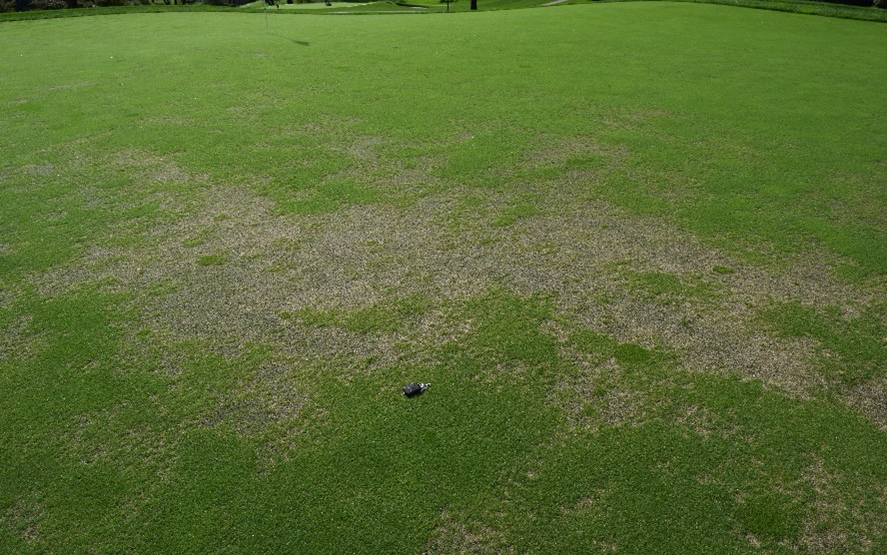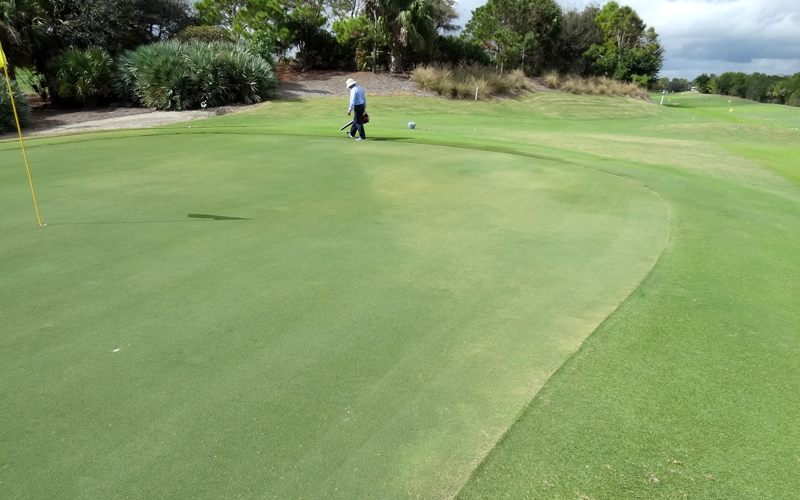Maximizing Nematode Control: Practical Advice from the Field
Indemnify® has dramatically reduced the damaging effects of nematodes across the country in both warm- (and cool-) season turf. Here’s some practical advice from the last few years of on-course use.
- Every course/playing surface is different – on most golf courses, only some greens or portions of some greens have high enough populations to cause visible symptoms or decreased performance
- The straw that breaks the camel’s back – affected greens tend to be the same ones each year, likely due to underlying agronomic or environmental issues that enhance stress from nematodes such as mechanical stress, shade, or root-infecting diseases like pythium, summer patch, take all root rot, etc.
- Symptoms may not be clearly visible – typical initial symptoms include slightly lower turf performance or areas “that look off”, but symptoms often amplify quickly when stress increases
- Nematodes are often confirmed after all other problems are ruled out
- Initial soil sampling is important – Determine if nematodes are present and if so, their levels and species
- Visible symptom alleviation trumps post-treatment nematode counts – an improvement in turf health is usually reported after application of a nematicide. However, we tend to avoid post-treatment lab samples because the nematode counts can be frustratingly complicated by inconsistent populations, variable sampling, overlapping lifecycles, competition between nematode species, and the ability of a healthier root system to support more nematodes
- Indemnify effectively controls most species of plant parasitic nematodes – This includes root-infecting species such as sting, root knot, and ring, and foliar-infecting species like Anguina
- Lance nematodes are tough to control - They are a migratory nematode, spending their lifecycle both inside and outside the turf roots. University researchers agree that no currently labeled nematicide will consistently and effectively control lance nematodes
-
Using Indemnify to control nematodes curatively after first diagnosis
- Start immediately after diagnosis almost regardless of the time of year to protect the maximum amount of roots and limit future damage
- Most effective control of root-infecting nematodes is usually seen with two applications at the high rate (0.39 oz/1000 sq ft) timed 14-28 days apart
- Speed and degree of turf improvement depends on environmental conditions and turfgrass growth rate
- Symptoms may likely occur year after year unless preventative control is implemented or greens are regrassed or rebuilt
-
Using Indemnify to preventatively control nematodes on courses with a history of nematodes
- Do your due diligence before implementing a management program. Control decisions are highly specific to each course depending on expectations, budget, degree of damage, species and size of populations, etc. Contact as many sources as possible to help with this decision
- Start early in the season to minimize nematode populations and protect roots, similar to the now standard practice of applying fungicides early to limit most root-infecting diseases
- Two applications of Indemnify are usually most effective on cool-season turf, though it may take two applications in the spring and two in the fall for warm-season turf
-
Resilia® may be a better fit depending on the situation
- Resilia combines the active ingredients of Indemnify, Banol®, and Densicor® to effectively control almost all root pathogens that synergize each other to cause root and turf damage
- Start early with Resilia applied every month or every other month as part of the fairy ring program is an effective way to minimize nematodes
- Up to four applications of Resilia are allowed per the label and up to 3 more Indemnify applications are allowed per year on especially problematic sites
-
Resistance to nematicides? – though nematicide resistance has not been reported in agriculture, preliminary research at University of Florida suggests the possibility. There’s currently few practical and effective options for rotation, but here’s our current recommendations:
- Avoid soil applications of SDHI fungicides to limit exposure to this mode of action (Indemnify is an SDHI)
- Consider rotating with other nematicides. Realize control may suffer short term but this is a long term nematicide management strategy
- Stay tuned as we learn more
- For more information – Follow all label recommendations and contact your Envu area sales manager if you need assistance
| Golf solution sheet - Nematode - warm season |

Symptoms of nematode damage can vary widely and be mistaken with many causes. Pictured is mid-summer damage on creeping bentgrass in the transition zone, likely enhanced with extended hot and wet weather (Envu)

Symptoms of nematode damage on right and recovery after Indemnify applications on left (Envu)
